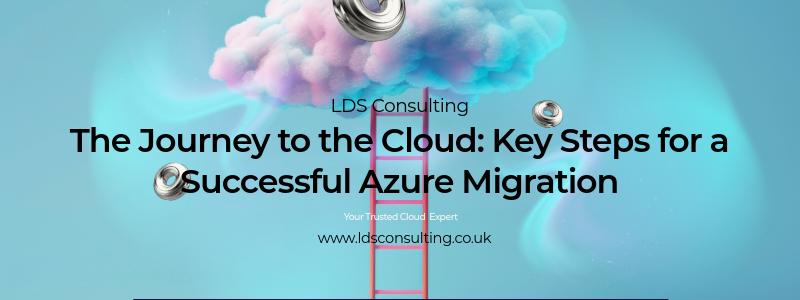
The Journey to the Cloud - Key Steps for a Successful Azure Migration
01 Apr 2025 · Azure, Cloud Migration, Strategy, Optimization, Cost Management
Learn about the critical steps and considerations for migrating your business, from planning and execution to ongoing optimization and cost management.
Why Azure Migration Matters
Migrating to the cloud is more than a technical shift—it's a strategic move that can empower your business with greater flexibility, enhanced security, and long-term scalability. Microsoft Azure, with its vast ecosystem of services, offers a compelling platform to support innovation, reduce costs, and streamline operations.
At LDS IT Consultancy, we’ve helped companies across industries make this transition smoothly. Here’s what you need to know to start your own successful Azure migration journey.
Step 1: Define Your Business Objectives
Before diving into the tech, step back and understand why you're moving to the cloud.
- Are you looking to modernize legacy systems?
- Do you want to improve security and compliance?
- Is cost reduction a major driver?
- Are you scaling rapidly and need elasticity?
These goals will shape your entire migration roadmap.
Step 2: Assess Your Existing Environment
A comprehensive assessment ensures there are no surprises during migration.
- Inventory your workloads: Servers, applications, databases, storage.
- Evaluate dependencies: What systems rely on each other?
- Performance baselines: Capture metrics to compare post-migration.
- Licensing and compliance: Ensure readiness for Azure’s shared responsibility model.
Tools like Azure Migrate can streamline discovery, analysis, and recommendations.
Step 3: Create a Migration Strategy
There’s no one-size-fits-all. Your strategy may involve:
- Rehost (“lift and shift”): Fastest method, minimal code changes.
- Refactor: Modify apps to better use Azure services like containers or serverless.
- Rearchitect: Break monoliths into microservices or adopt modern platforms.
- Rebuild: Full redevelopment using Azure-native features.
Plan based on criticality, business impact, and technical feasibility.
Step 4: Execute the Migration in Phases
Avoid the “big bang.” Break the migration into controlled, testable stages:
- Pilot small workloads: Gain insights and validate assumptions.
- Use change windows: Minimize impact on business operations.
- Leverage automation: Azure DevOps and ARM/Bicep templates help ensure repeatability.
- Monitor and rollback: Always have a plan B in case of performance issues.
Step 5: Optimize Post-Migration
Migration is just the beginning. Azure provides extensive tools to help you optimize performance and reduce costs:
- Azure Cost Management: Track, allocate, and optimize cloud spend.
- Azure Advisor: Get best-practice recommendations for availability, security, performance, and cost.
- Right-size resources: Downscale over-provisioned VMs or convert to PaaS offerings.
Ongoing reviews ensure you're getting the most value from the cloud.
Step 6: Strengthen Governance and Security
With new capabilities comes new responsibility. Strengthen your Azure environment with:
- Role-based access control (RBAC) and PIM for secure access management.
- Azure Policy to enforce standards and regulatory compliance.
- Microsoft Defender for Cloud (formerly Security Center) for threat detection and mitigation.
- Backup and disaster recovery plans using Azure Backup and Site Recovery.
Security isn’t a checkbox—it’s an evolving process.
Step 7: Enable Continuous Improvement
Cloud adoption should drive innovation and agility. Foster a culture of continuous improvement by:
- Holding monthly architecture reviews
- Monitoring resource performance trends
- Encouraging feedback from teams using Azure daily
- Exploring AI and automation opportunities with services like Azure Logic Apps and Azure OpenAI
Conclusion
A successful Azure migration isn't just about moving servers—it's about transforming your business. With the right plan, tools, and mindset, your organization can achieve more with less complexity and risk.
If you're ready to begin your cloud journey or want expert guidance on optimizing your Azure environment, reach out to our team at LDS IT Consultancy. We’re here to help every step of the way.
Want a 1-2-1 migration workshop or environment assessment? Book a free consultation.